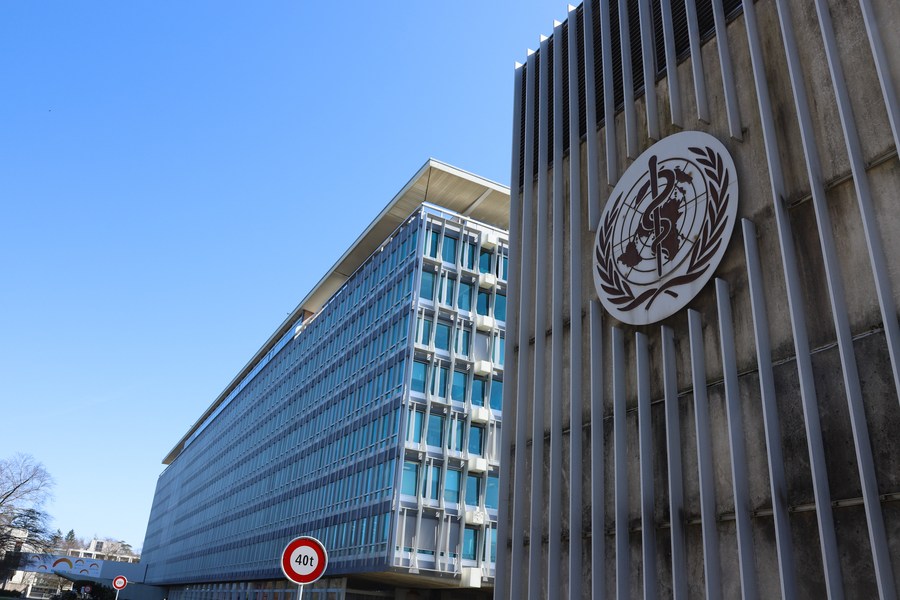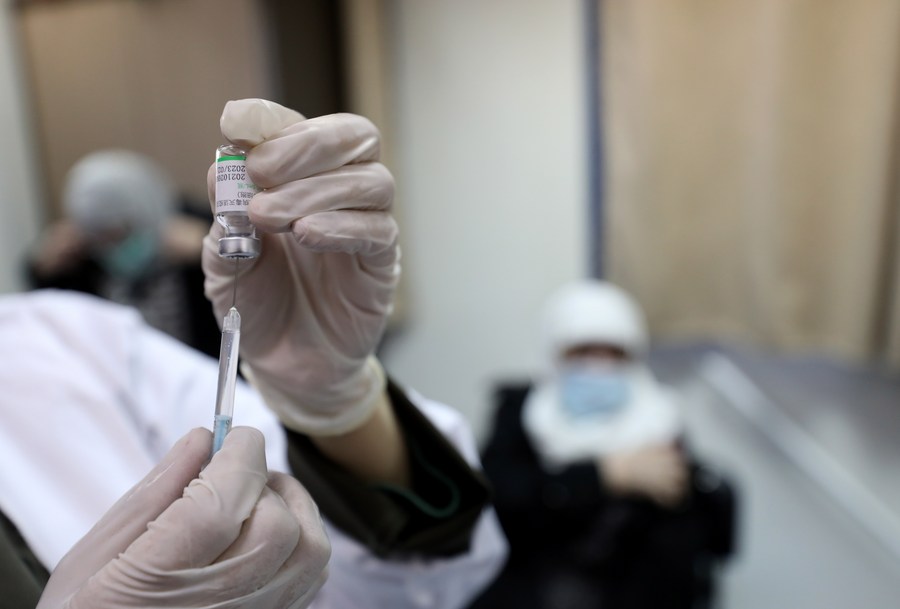
Tuesday, May 11, 2021
— The World Health Organization (WHO) validated on Friday the COVID-19 vaccine developed by China’s Sinopharm for emergency use, a move set to boost global vaccine rollout, particularly in the developing world.
— The jab is an inactivated vaccine with easy storage requirements, which makes it highly suitable for use in low-resource settings.
— It is also the first vaccine that will carry a vial monitor, which changes color if exposed to heat, letting health workers know whether the vaccine can be safely used.
— According to the WHO’s Strategic Advisory Group of Experts on Immunization, the Sinopharm vaccine is recommended for use in adults 18 years and older in a two-dose schedule with a spacing of three to four weeks.
— With the WHO’s validation for emergency use, the Sinopharm vaccine, as the first COVID-19 vaccine developed by a non-western country, is expected to accelerate vaccine rollout in many low and middle-income countries through purchase and delivery by the WHO-led initiative.
GENEVA, May 7 (Xinhua) — The World Health Organization (WHO) validated on Friday the COVID-19 vaccine developed by China’s Sinopharm for emergency use, a move set to boost global vaccine rollout, particularly in the developing world.
«This afternoon, the WHO gave emergency use listing to Sinopharm Beijing’s COVID-19 vaccine, making it the sixth vaccine to receive WHO validation for safety, efficacy and quality,» said WHO Director General Dr. Tedros Adhanom Ghebreyesus at a press briefing.

Photo taken on March 30, 2021 shows an exterior view of the headquarters of the World Health Organization (WHO) in Geneva, Switzerland. (Xinhua/Chen Junxia)
«This expands the list of vaccines that COVAX can buy and gives countries confidence to expedite their own regulatory approval, and to import and administer a vaccine,» he said.
COVAX is a global coalition that works to ensure fair and equitable access to COVID-19 vaccines around the world.
In addition to the Sinopharm’s BBIBP-CorV vaccine, the WHO had previously listed the COVID-19 vaccine developed by Pfizer/BioNTech, two versions of the AstraZeneca/Oxford vaccine, the Janssen vaccine and the Moderna vaccine for emergency use.
In an official press release, WHO Assistant Director General for Access to Health Products Dr. Mariangela Simao said that the addition of the Sinopharm vaccine has «the potential to rapidly accelerate COVID-19 vaccine access for countries seeking to protect health workers and populations at risk.»
FIRST COVID-19 JAB WITH VIAL MONITOR
The jab produced by the Beijing Bio-Institute of Biological Products Co. Ltd., a subsidiary of the China National Biotec Group, is an inactivated vaccine with easy storage requirements, which makes it highly suitable for use in low-resource settings.

A doctor shows a box of China’s Sinopharm COVID-19 vaccine in Varoslod, Hungary, Feb. 24, 2021. (Tamas Vasvari/MTI via Xinhua)
It is also the first vaccine that will carry a vial monitor, a small sticker on the vials that changes color if the vaccine is exposed to heat, letting health workers know whether the vaccine can be safely used.
According to the WHO’s Strategic Advisory Group of Experts on Immunization (SAGE), the Sinopharm vaccine is recommended for use in adults 18 years and older in a two-dose schedule with a spacing of three to four weeks.
Though few adults over 60 years were enrolled in clinical trials and efficacy could not be estimated in this age group, the WHO is not recommending an upper age limit for the Sinopharm vaccine, because reviewed data have suggested that the vaccine is likely to have a protective effect in older persons, according to the WHO press release.
«There is no theoretical reason to believe that the vaccine has a different safety profile in older and younger populations,» said the WHO press release, which recommends that countries using the vaccine in older age groups conduct safety and effectiveness monitoring.
Assessment by SAGE has shown that the Sinopharm vaccine had been authorized by 45 countries or jurisdictions for use in adults 18 years or older, where more than 65 million doses had been administered through emergency use programs. No safety concerns have been identified from pre-clinical or repro/tox (reproductive toxicity) studies, while most adverse events were mild to moderate, such as injection pain, headache and fatigue.
GLOBAL PUBLIC GOOD
As of Wednesday, more than 1.1 billion COVID-19 vaccine doses had been administered globally, but over 80 percent of those had been administered in high and upper-middle income countries, while just 0.3 percent in low-income countries, according to Tedros.
With the WHO’s validation for emergency use, the Sinopharm vaccine, as the first COVID-19 vaccine developed by a non-western country, is expected to accelerate vaccine rollout in many low and middle-income countries through purchase and delivery by the WHO-led COVAX initiative.

A health worker prepares a dose of Sinopharm COVID-19 vaccine during a vaccination campaign in Palestine’s West Bank city of Nablus, April 4, 2021. (Photo by Ayman Nobani/Xinhua)
According to Yu Qingming, chairman of the Sinopharm Group, this year’s output of the Sinopharm vaccine is targeted at more than one billion doses, and is expected to reach three billion doses in the future.
China has decided to provide ten million COVID-19 vaccine doses to the COVAX initiative to meet the urgent needs of developing countries, a concrete step to deliver on the promise to make vaccines a global public good.
This is also an important achievement in the field of epidemic prevention and control. China was the first to have put the pandemic under control, and successfully developed one of the earliest vaccines in the world.
Adhering to the concept of a community with a shared future for health, China has so far provided vaccine assistance selflessly to more than 80 countries and three international organizations, exported vaccines to more than 40 countries, and collaborated with over ten countries in vaccine research and development (R&D) and production.
The validation of the Chinese vaccine, which is the result of high technology content and high R&D investment, has also strengthened the international recognition of the «Made in China» and «R&D in China labels.»
(Video reporters: Chen Junxia, Ling Xin, Liu Qu, Li Xiaopeng, Zhang Xuan, Li Yizhi; video editor: Zhang Qiru)
